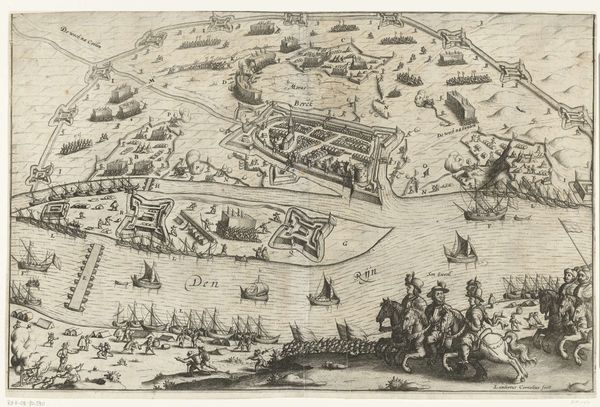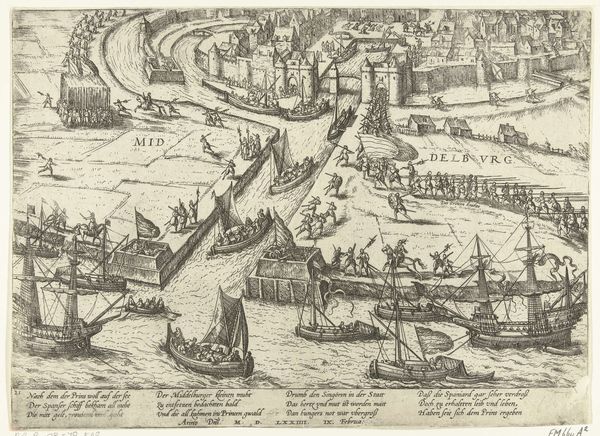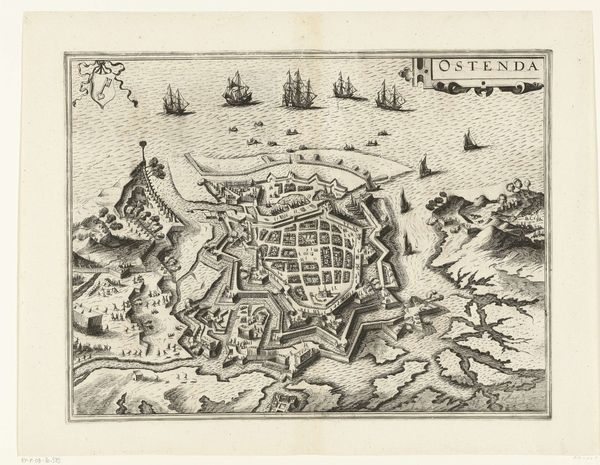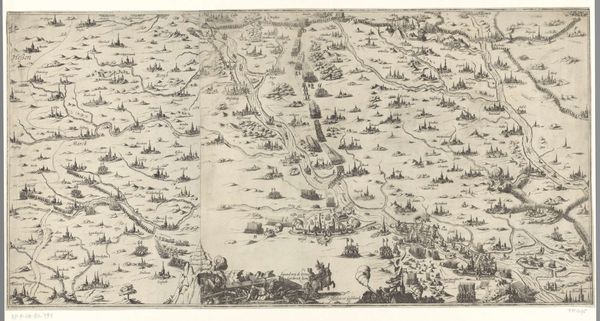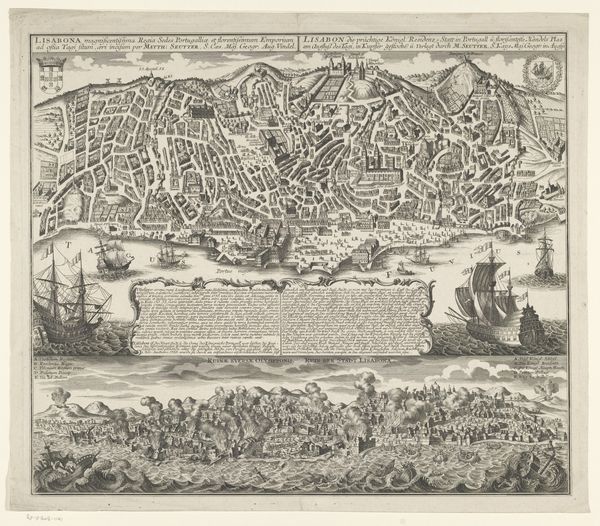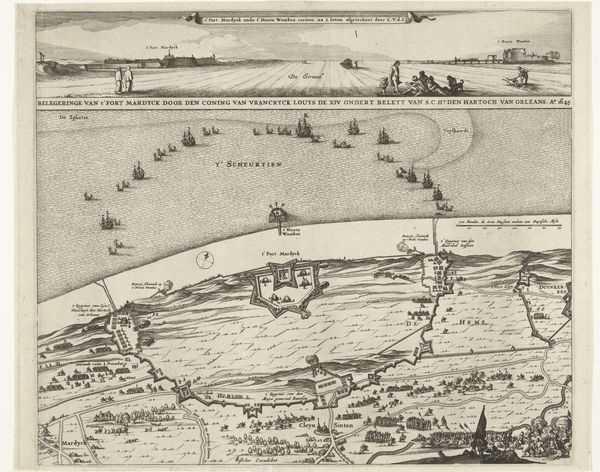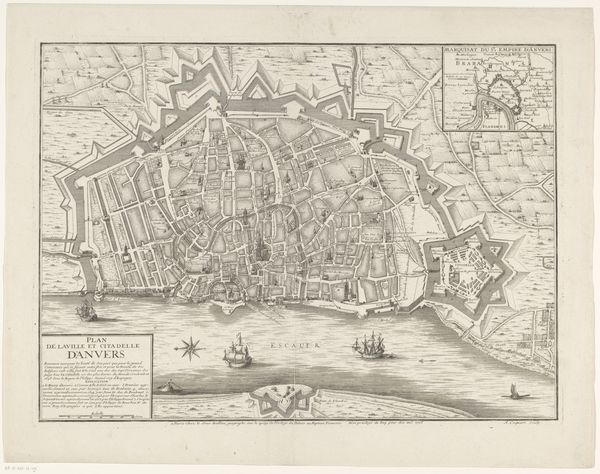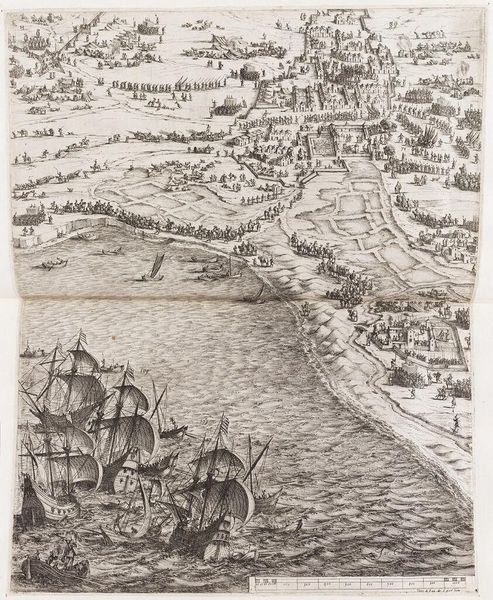
drawing, print, etching, ink, engraving
#
drawing
# print
#
etching
#
landscape
#
mannerism
#
ink
#
cityscape
#
history-painting
#
northern-renaissance
#
engraving
Dimensions: height 216 mm, width 280 mm
Copyright: Rijks Museum: Open Domain
Curator: Before us hangs “Zeeslag bij een Ottomaans schiereiland,” or “Naval Battle at an Ottoman Peninsula,” a 1550 engraving by Hieronymus Cock, residing here at the Rijksmuseum. Editor: What strikes me immediately is the overwhelming sense of conflict and siege. It's a scene teeming with ships, soldiers, and this heavily fortified city – almost claustrophobic in its detail. The meticulous linework only amplifies the tension. Curator: Indeed. Cock, active in Antwerp during a period of intense religious and political upheaval, wasn't necessarily aiming for topographical accuracy. His publishing house played a significant role in disseminating Mannerist ideals throughout Northern Europe, which we see reflected in this imagined landscape. The very notion of the “Ottoman Peninsula” would have stirred fear in European audiences, given the ongoing conflicts. Editor: That fear is palpable! Notice the way the city is depicted: layered with defensive walls, but still feeling vulnerable beneath the encroaching fleets. The individual ships are quite symbolic, aren’t they? Bristling with armaments, each vessel an emblem of power, a projection of cultural anxieties surrounding Ottoman expansion into Europe. Curator: Precisely! It’s a carefully constructed projection. Look how he contrasts the detailed rendering of the European ships with the more generalized portrayal of the Ottoman forces, dehumanizing them almost, reducing them to swarming masses. It's a powerful piece of propaganda, subtly reinforcing Western identity and perceived superiority. Editor: But beyond the propaganda, it speaks to a timeless human narrative. Conflict, defense, the clash of civilizations. Aren't the symbolic walls also representative of ideological barriers, beliefs under siege? That looming fortress... I keep circling back to it! It whispers tales of countless sieges, each one leaving an imprint on collective memory. Curator: I concur. While undoubtedly shaped by the political climate of 16th-century Europe, Cock's image offers a broader commentary on human conflict and the enduring quest for power, reminding us of the socio-political dimensions intertwined in seemingly simple landscape views. Editor: Yes. And understanding the resonance of visual symbols like these equips us to better understand their legacy in our own visual culture. Thank you for elucidating the layered significance in Hieronymus Cock's print.
Comments
No comments
Be the first to comment and join the conversation on the ultimate creative platform.
